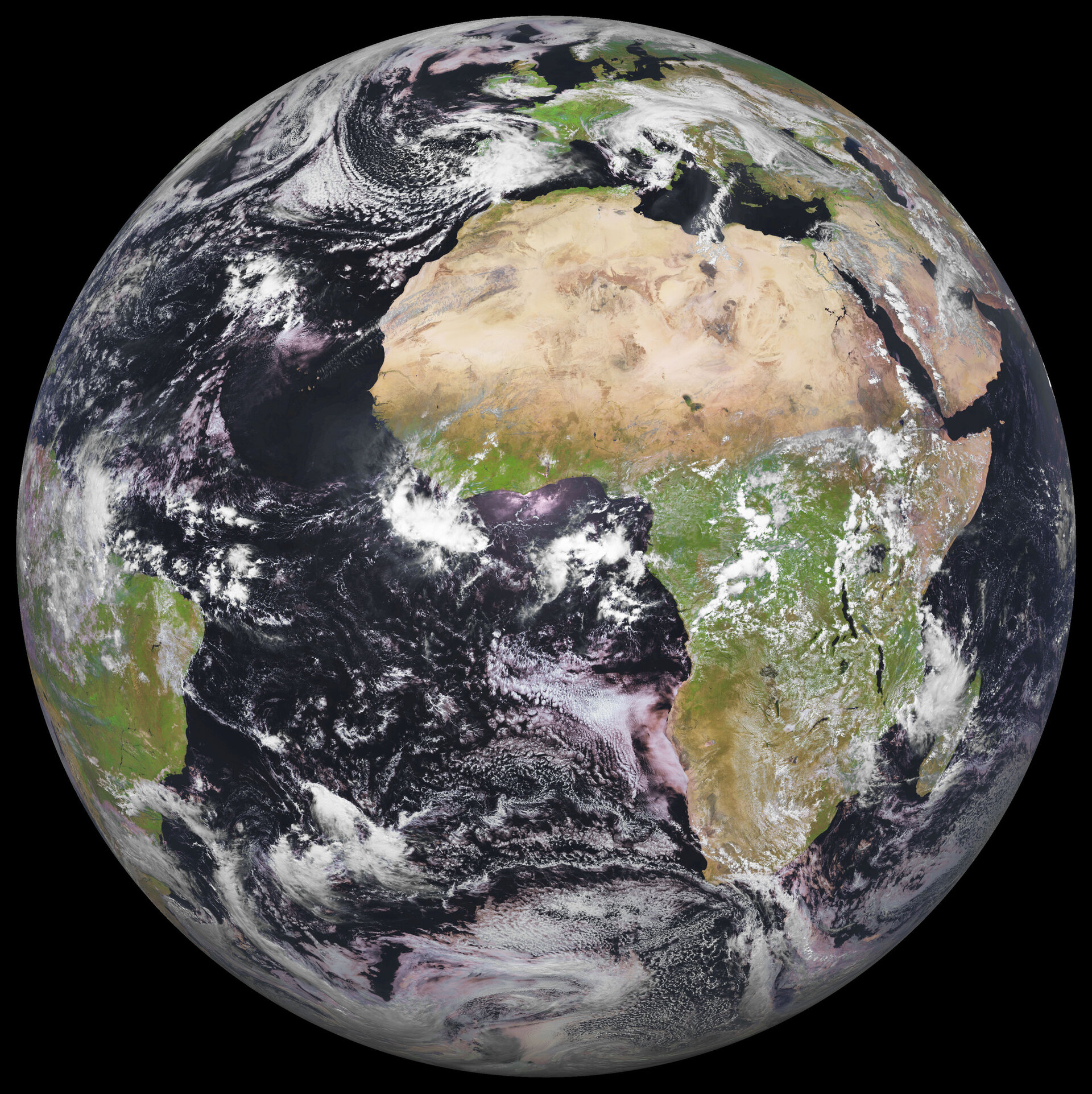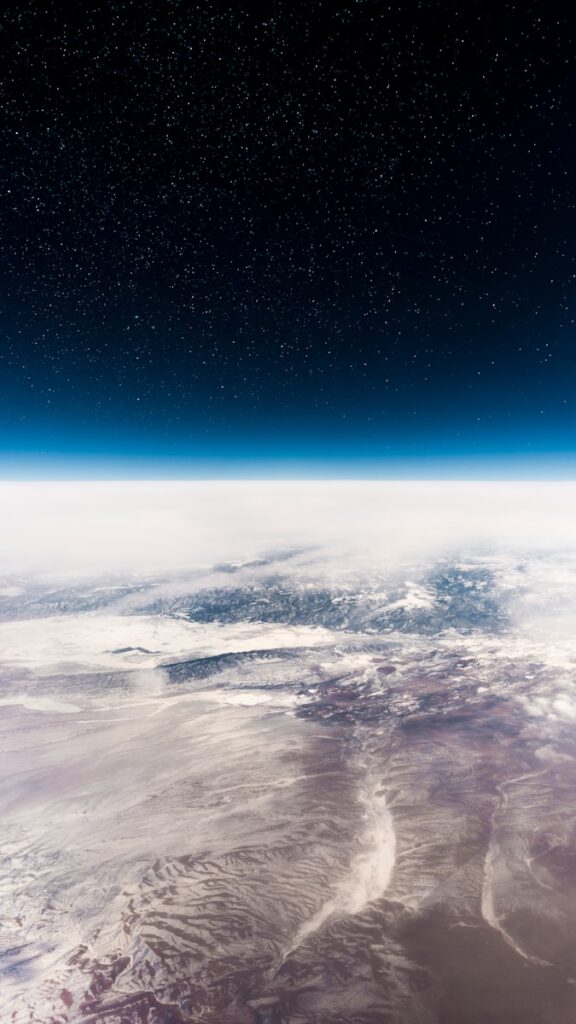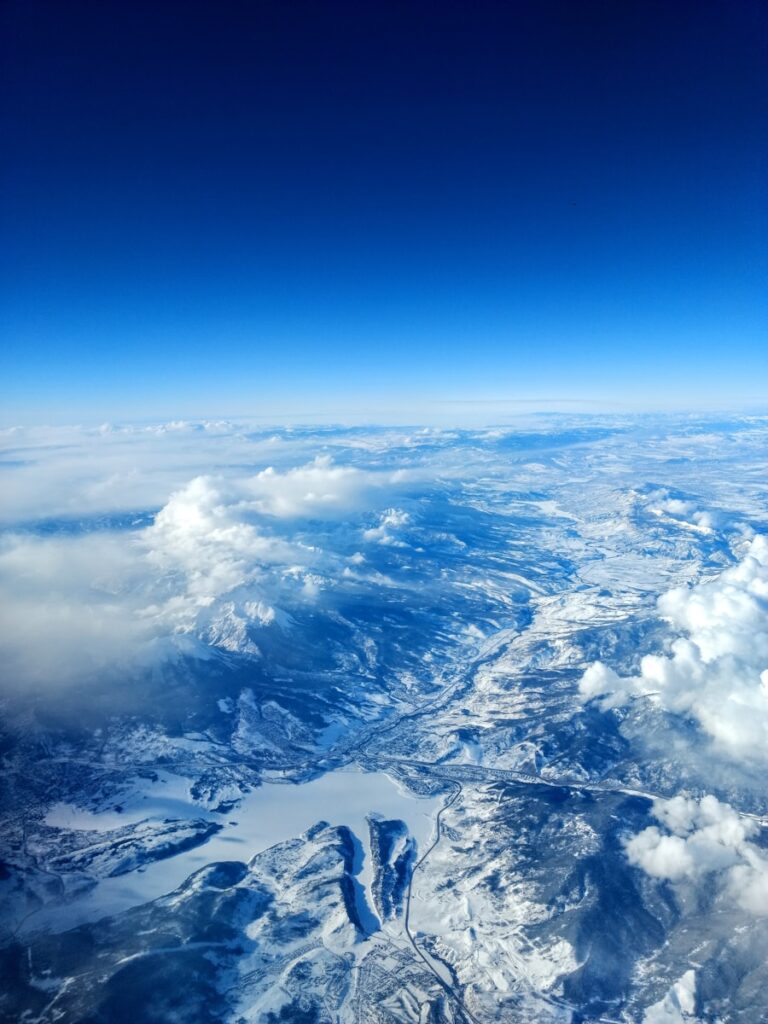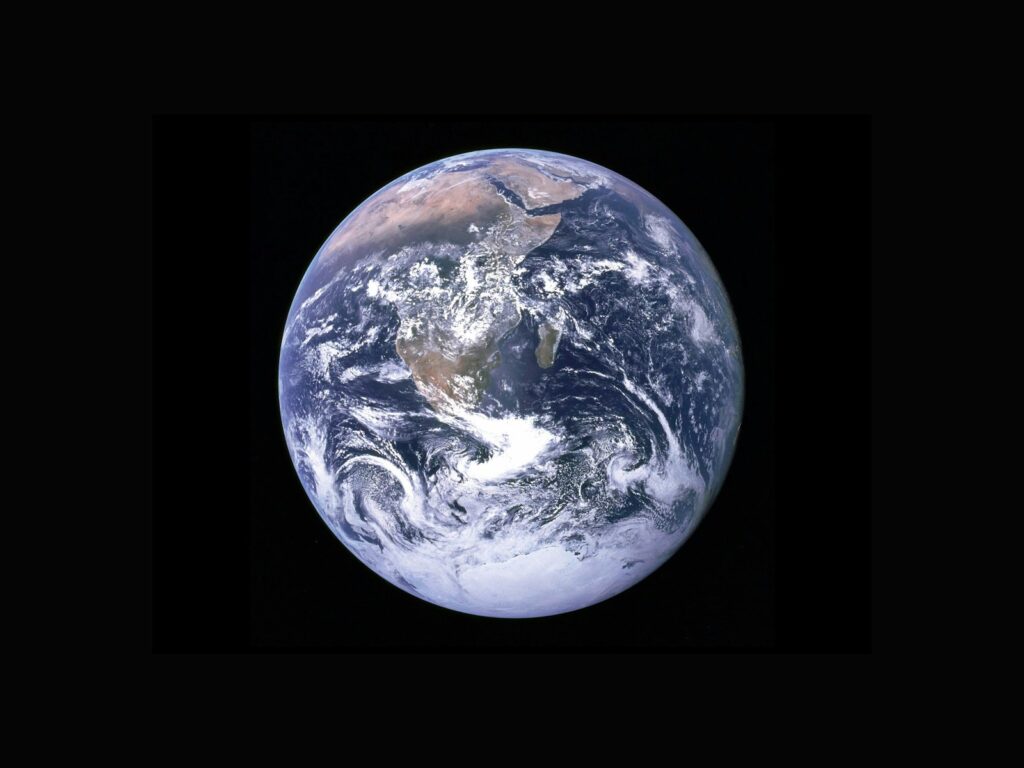
The Atmosphere: Earth’s Delicate, Multi-Layered Shield
Earth is wrapped in an atmosphere—a dynamic, multi-layered system that sustains life by providing oxygen, regulating temperature, and blocking harmful space radiation. Defining its boundary with space is not straightforward, but a common marker sits about 60 miles above the surface—roughly 10 times higher than commercial airplanes fly. From space, this layer looks remarkably thin: scale Earth to a basketball, and the atmosphere would be thinner than a dime. This fragility underscores its importance.
NASA studies the atmosphere through a layered approach, combining data from ground networks, satellites, and airplanes. This work connects phenomena from high above the clouds to ground-level chemistry, painting a full picture of atmospheric dynamics.

High-Altitude Lights: Sprites and Transient Luminous Events
In July 2024, NASA astronaut Nichole Ayers captured a striking image from the International Space Station (ISS): a red, jellyfish-shaped “sprite” shooting 50 miles above a thunderstorm over Mexico and the southern U.S. Sprites are part of Transient Luminous Events (TLEs)—rare, poorly understood phenomena in the upper atmosphere triggered by intense thunderstorm electrical activity.
TLEs include upward-shooting blue jets and UFO-like “ELVES,” but sprites are the most commonly observed. They earn nicknames like “jellyfish” (for tentacle-like branches) or “carrots” (for trailing tendrils) and can reach up to 50 miles high. Their red color comes from interactions with upper-atmosphere nitrogen.
First spotted by airline passengers in the 1950s and first photographed in 1989, sprites (and TLEs) remain mysterious. Scientists still don’t know why some lightning strikes trigger them while others do not. The ISS offers a unique vantage point: astronauts see TLEs above clouds and lightning below simultaneously, providing data to study their links to thunderstorms. As Ayers noted, “We have a great view above the clouds, so scientists can use these types of pictures to better understand the formation, characteristics, and relationship of TLEs to thunderstorms.”

The Ozone Layer: Protection, Depletion, and Recovery
Lower in the atmosphere, the ozone layer—located in the stratosphere, above the troposphere where weather occurs—acts as a critical shield. Ozone (O₃) differs from breathable oxygen (O₂); though toxic to inhale, it absorbs harmful ultraviolet (UV) radiation, converting it into heat. Without it, life on Earth’s surface would face devastating UV exposure, from skin cancer to disrupted ecosystems.
In the 1980s, scientists discovered a “ozone hole” over Antarctica—rapid ozone depletion linked to human-made chemicals. NASA’s Antarctic Airborne Ozone Expedition in 1987 confirmed the cause: chlorofluorocarbons (CFCs), used in refrigerants, solvents, and hairspray. When CFCs reach the stratosphere, UV radiation breaks them down, releasing chlorine atoms that destroy thousands of ozone molecules each.
The discovery spurred global action. The 1987 Montreal Protocol, now ratified by 198 countries, phased out CFCs. Though CFCs persist in the atmosphere for a century, the ozone layer is healing. Paul Newman, a NASA scientist who studied the crisis, notes, “We’re on the improvement slope, which is good. So things are getting better. Slowly, things are getting better.” This success shows global cooperation can address planetary threats.

Ground-Level Air Quality: The Hidden Risks of Near-Surface Ozone
NASA’s research extends beyond the upper atmosphere to focus on near-surface air quality—a critical factor for human health. Air pollution is recognized as a leading cause of premature mortality worldwide, contributing to approximately eight million deaths each year. Among the key pollutants studied is ground-level ozone, which differs sharply from its beneficial counterpart in the stratosphere. While stratospheric ozone shields Earth from harmful UV radiation, ozone near the surface is toxic to humans, causing respiratory issues and exacerbating conditions like asthma.
This ground-level ozone is not emitted directly into the air. Instead, it forms through complex chemical reactions: when nitrogen oxides (released by vehicle exhaust and industrial processes) and volatile organic compounds (VOCs, found in solvents, paints, and even some plants) interact in the presence of sunlight, they produce excess ozone. Laura Judd, a scientist at NASA’s Langley Research Center who specializes in air quality, notes that understanding this process is key to controlling ozone levels. “It’s not about tracking a single pollutant, but untangling how human activities and natural chemistry come together to create a health risk,” she explains.

Monitoring Tools: From Satellites to Airborne Missions
To map and forecast ground-level ozone and other pollutants, NASA uses a multi-layered monitoring system. A cornerstone of this effort is the TEMPO satellite instrument, short for Tropospheric Emissions: Monitoring of Pollution. Operating from a geostationary orbit, TEMPO stays fixed over North America, providing real-time updates on atmospheric conditions—from urban smog to regional pollution patterns. It is part of a global network, complemented by satellites monitoring Europe and Asia, creating a comprehensive view of worldwide air quality.
Satellite data alone is not enough, however. Judd leads airborne campaigns that fill in critical details. In 2023, for example, the Synergistic Tempo Air Quality Science (STAQS) mission used Gulfstream jets to map pollution over cities like New York and Los Angeles. Flying directly under TEMPO’s orbital path, the planes collected on-the-spot measurements, linking satellite observations to ground-level conditions. “We stack our observing system vertically,” Judd says. “Satellites give the big picture, ground sensors track local levels, and aircraft connect the two—especially when clouds block satellite views.” This combination ensures that even on cloudy days, scientists can piece together an accurate understanding of how pollution moves and forms.

Balancing Progress and Planetary Stability
Human activity affects more than the atmosphere. Large structures like China’s Three Gorges Dam, the world’s largest hydroelectric dam, subtly influence Earth’s rotation. Its reservoir, holding 10.6 trillion gallons when full, redistributes mass enough to lengthen a day by 0.06 microseconds—tiny but a reminder of humanity’s growing impact.
This raises a key question: How to balance progress with preserving Earth’s natural balance? The ozone crisis offers hope. Once seen as essential, CFCs were replaced with alternatives, showing innovation can solve even massive problems. As Newman puts it, “We live in an amazing technological society that is just as capable of creating problems as solving problems.”
From high-flying sprites to healing ozone and the air we breathe, NASA’s research reveals Earth as a web of interconnected systems. Understanding these connections—and acting on them—will shape our ability to protect the planet. As history shows, with global cooperation and innovation, we can rise to the challenge.eractions. From the electric sky above North America where sprites dance, to the protective shield high above us, and the air we breathe near the ground, understanding our atmosphere is a continuous journey. It’s a journey that requires looking from space, from aircraft, and from the ground, piecing together data to build a clearer picture of the air that sustains us all and the forces that shape it, including our own activities.




